Mint of Poland stakes a claim to the architectural coin throne with Amber Art Baroque.
The field of art-architectural coins is growing a little more with the debut of a new series from one of the two premier purveyors of this type of numismatic, the Mennica Polska. King of the hill has been Coin Invest Trust (CIT) with their seminal Tiffany Art and Mineral Art series, but the Mint of Poland have been competing hard for the last few years with some superb coins – the Imperial Art and Crystal Art ranges in particular.
Now there’s a whole new series looking to take the throne; Amber Art. The first in a new annual series, there are few surprises when you look at the specification chart. Two ounces of antiqued fine silver, 50mm diameter, and a high-relief strike are fairly typical since the debut of Tiffany over a decade ago. There’s a reason the format is popular in this genre – it works perfectly. A great canvas for a coin design, it’s no wonder there are so many outstanding architectural coins on the market today. This series will look at architectural styles, very much like the Tiffany range. First in line is Baroque, a 17th century European movement characterised by ornate decoration and detail. Most exemplified by the Palace of Versailles and the work of Christopher Wren in architectural terms, it encompassed other fields. The music of Vivaldi, Bach, and Handel, and the art of Caravaggio and Rubens are considered major contributors to the movement.
The design is as intricate and impressive as you would expect given the heritage and the subject matter. The obverse face showcases a monstrous staircase, surrounded by ornate columns, statues and decoration. The typical Niue Island obverse of the Queens effigy surrounded by the inscriptions is isolated into a mini-coin. This helps keep the overall design free of intrusion from what is a necessary part of the coin. The reverse face carries even more intricate detail, but the key element here, one which gives the series its name, is the ovoid amber highlight. Unusually, it’s not a window, and behind the amber can be seen engraved a variety of character images from the period and in a style that often adorned ceilings and paintings in that period. It’s clever and different.
Fortunately, the coin comes well boxed and in a coloured shipper. A Certificate of Authenticity will be enclosed for each of the 500 coins being minted. Price hasn’t been confirmed yet, but we’d imagine it will sit somewhere around €225-250 and there’ll be a small group of dealers like Pela-Coins that will stock them. Early impressions are that this will be another top tier entrant in the art-architectural coin market. It should ship sometime in December. Future releases will be the Rennaisance in 2017, Rococco in 2018, and Romanticism in 2019.
2016 AMBER ART BAROQUE SILVER COIN
WHAT IS BAROQUE?
Baroque architecture is the building style of the Baroque era, begun in late 16th-century Italy, that took the Roman vocabulary of Renaissance architecture and used it in a new rhetorical and theatrical fashion, often to express the triumph of the Catholic Church and the absolutist state. It was characterized by new explorations of form, light and shadow, and dramatic intensity.
Whereas the Renaissance drew on the wealth and power of the Italian courts and was a blend of secular and religious forces, the Baroque was, initially at least, directly linked to the Counter-Reformation, a movement within the Catholic Church to reform itself in response to the Protestant Reformation. Baroque architecture and its embellishments were on the one hand more accessible to the emotions and on the other hand, a visible statement of the wealth and power of the Church. The new style manifested itself in particular in the context of the new religious orders, like the Theatines and the Jesuits who aimed to improve popular piety.
The architecture of the High Roman Baroque can be assigned to the papal reigns of Urban VIII, Innocent X and Alexander VII, spanning from 1623 to 1667. The three principal architects of this period were the sculptor Gianlorenzo Bernini, Francesco Borromini and the painter Pietro da Cortona and each evolved his own distinctively individual architectural expression.
Dissemination of Baroque architecture to the south of Italy resulted in regional variations such as Sicilian Baroque architecture or that of Naples and Lecce. To the north, the Theatine architect Camillo-Guarino Guarini, Bernardo Vittone and Sicilian born Filippo Juvarra contributed Baroque buildings to the city of Turin and the Piedmont region.
A synthesis of Bernini, Borromini and Cortona’s architecture can be seen in the late Baroque architecture of northern Europe which paved the way for the more decorative Rococo style.
By the middle of the 17th century, the Baroque style had found its secular expression in the form of grand palaces, first in France—with the Château de Maisons (1642) near Paris by François Mansart—and then throughout Europe. During the 17th century, Baroque architecture spread through Europe and Latin America, where it was particularly promoted by the Jesuits.
ANGLED VIEW AND THE SHIPPER BOX?
SPECIFICATION
| DENOMINATION | COMPOSITION | WEIGHT | DIAMETER | FINISH | MINTAGE | BOX / COA |
|---|---|---|---|---|---|---|
| $5 NIUE ISLAND | 0.999 SILVER | 62.2 g | 50.0 mm | ANTIQUE | 500 | YES / YES |


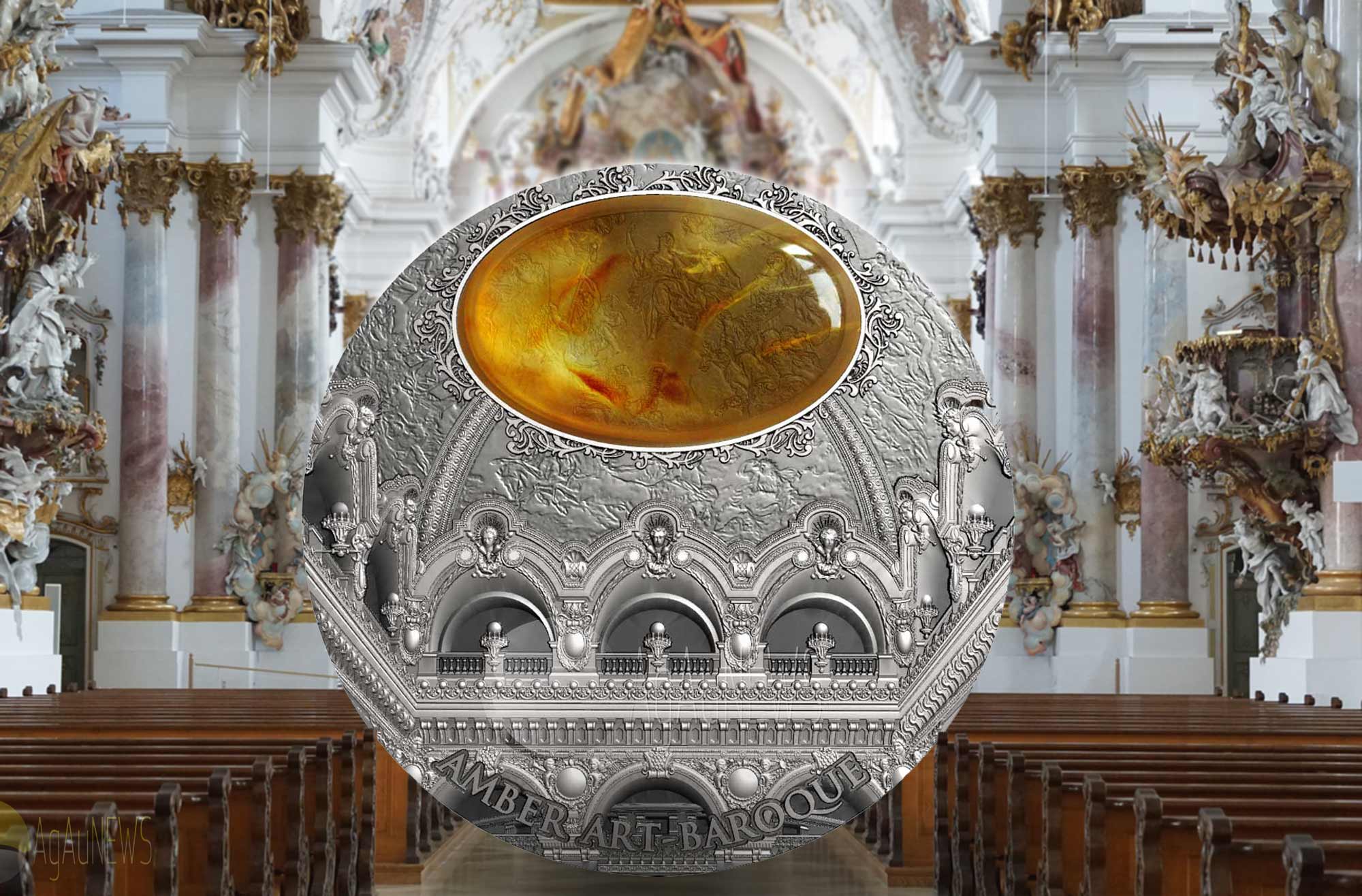
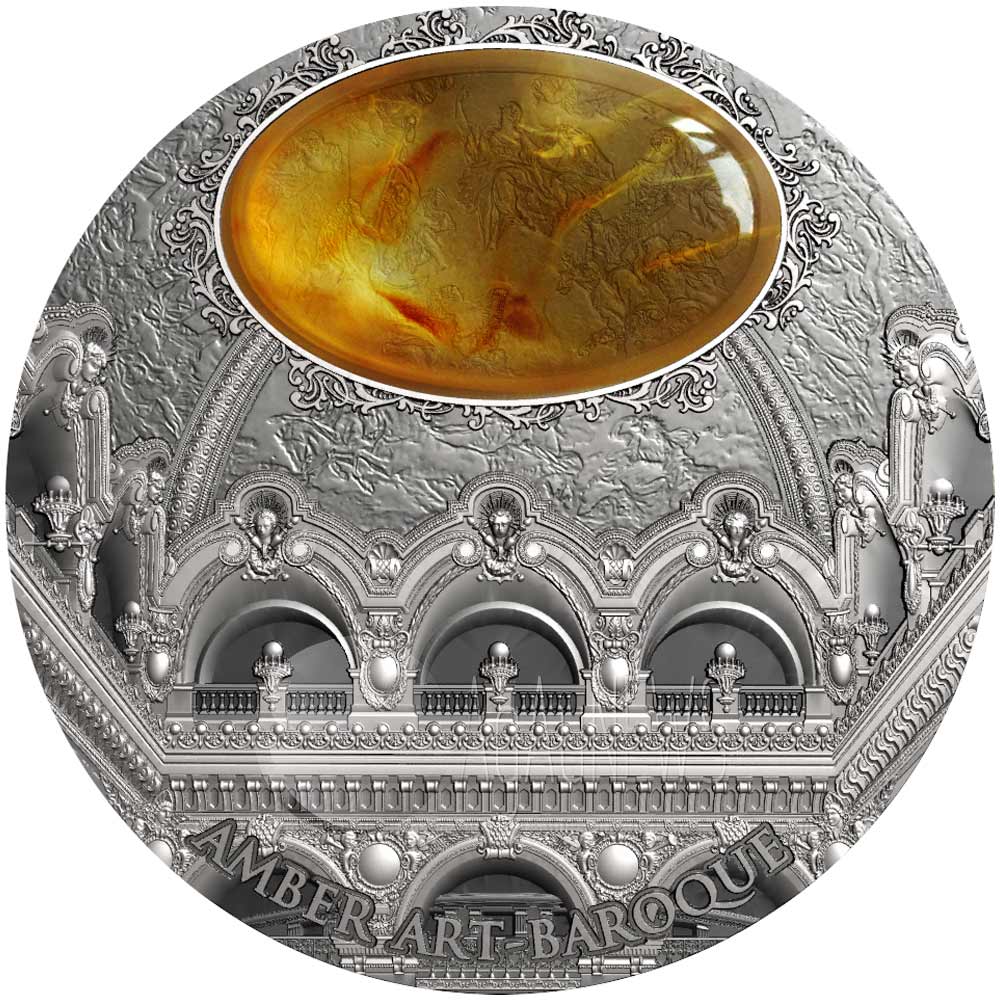
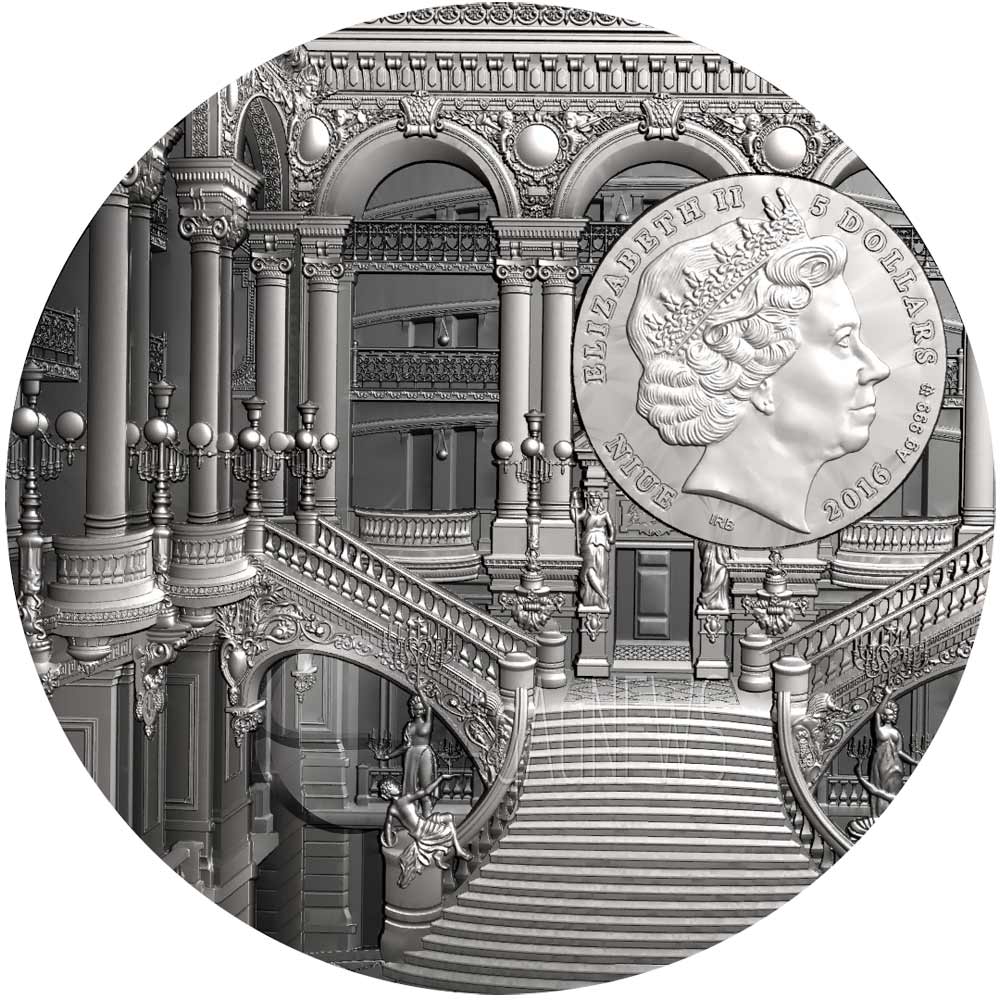
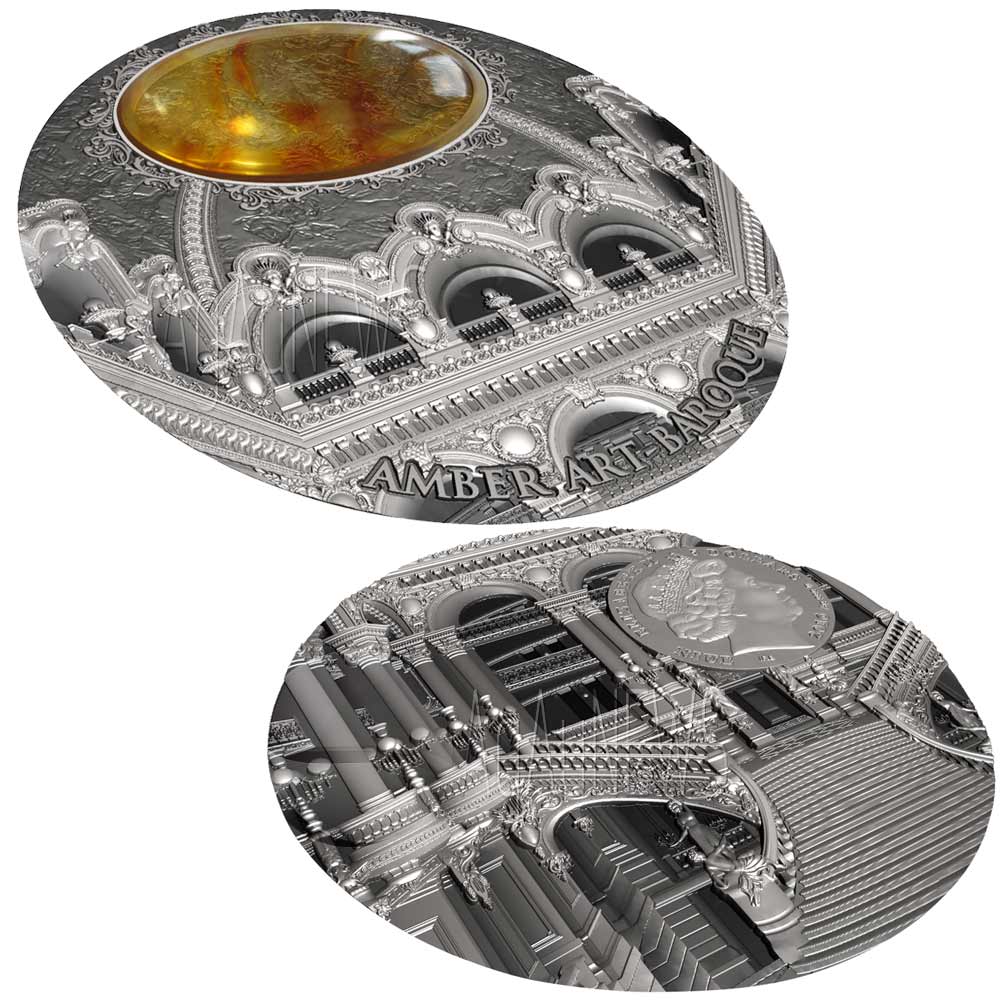
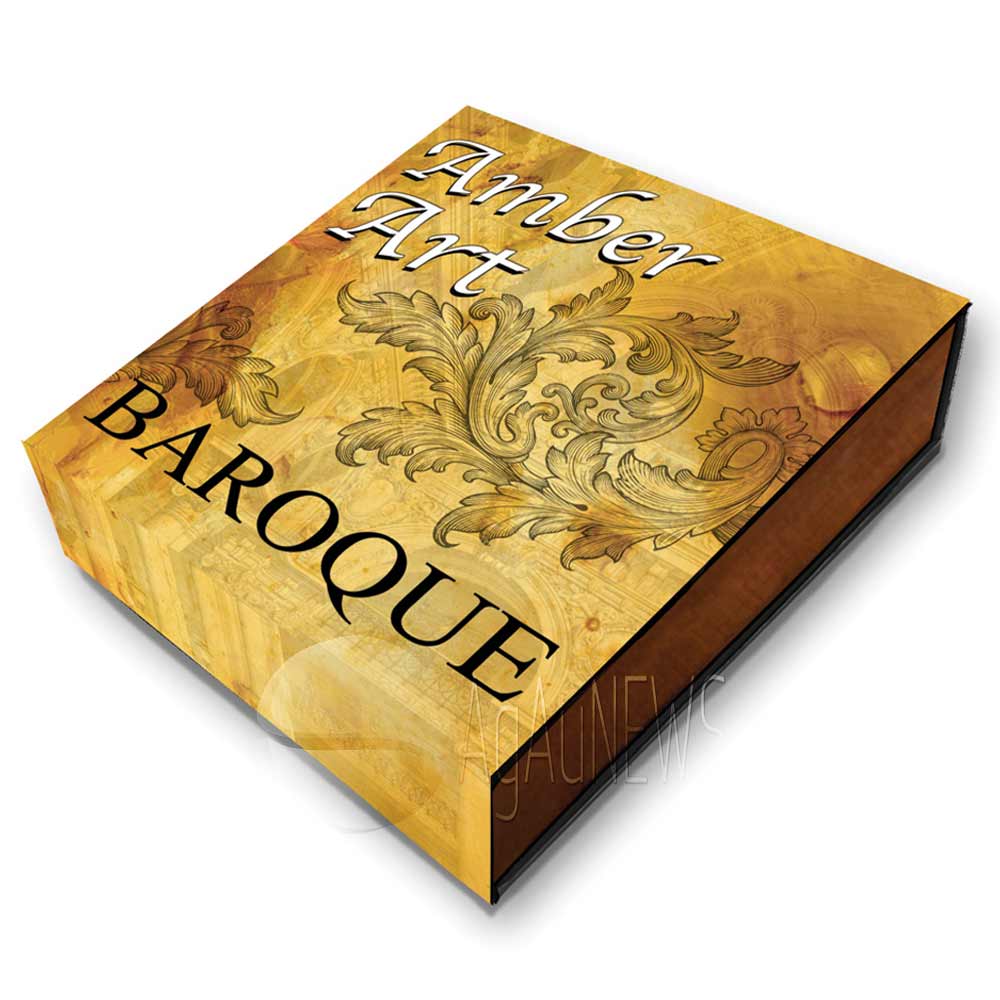





Mike,
Does this Baroque issue replicate any particular known building?
I’ll try to find out Bob. I think the details are generic to the movement but they must be based on something.
Does it come in a capsule, and are there any photos showing real examples of the coin?